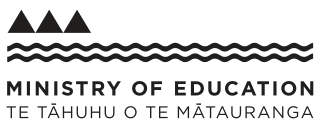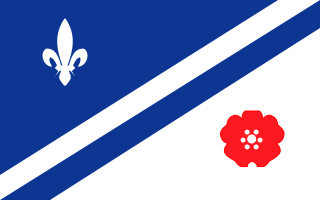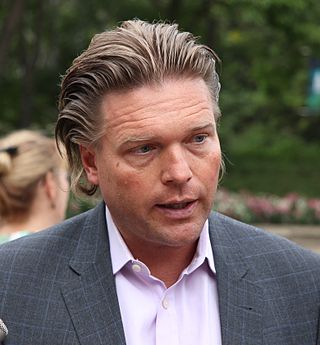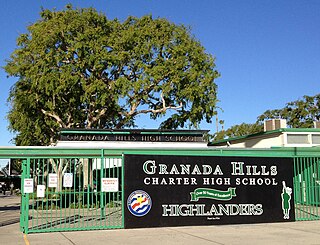The Canadian province of Alberta has 379 school authorities, which are sometimes referred to as school boards, school districts, or school divisions. Types include public school, separate school and francophone school authorities. There are also charter schools and private schools that act as their own authorities, as well as schools under the authority of early childhood services (ECS), private operators, and Federal Indian Affairs. [1] Alberta's school authorities report to Alberta Education.

Alberta is one of the thirteen provinces and territories of Canada. It is a part of Western Canada and is one of the three prairie provinces. Alberta borders British Columbia to the west, Saskatchewan to the east, the Northwest Territories to the north, and the U.S. state of Montana to the south. It is one of the only two landlocked provinces in Canada, with Saskatchewan being the other. The eastern part of the province is occupied by the Great Plains, while the western part borders the Rocky Mountains. The province has a predominantly continental climate but experiences quick temperature changes due to air aridity. Seasonal temperature swings are less pronounced in western Alberta due to occasional Chinook winds.

Education in Canada is for the most part provided publicly, funded and overseen by federal, provincial, and local governments. Education is within provincial jurisdiction and the curriculum is overseen by the province. Education in Canada is generally divided into primary education, followed by secondary education and post-secondary. Education in both English and French is available in most places across Canada. Canada has a large number of universities, almost all of which are publicly funded. Established in 1663, Université Laval is the oldest post-secondary institution in Canada. The largest university is the University of Toronto with over 85,000 students. Four universities are regularly ranked among the top 100 world-wide, namely University of Toronto, University of British Columbia, McGill University, and McMaster University, with a total of 18 universities ranked in the top 500 worldwide.

The Ministry of Education is the public service department of New Zealand charged with overseeing the New Zealand education system.

Franco-Albertans are francophone residents of the Canadian province of Alberta. Franco-Albertans may also refer to residents of Alberta with French Canadian ancestry, although publications from the government of Alberta use the term Franco-Albertan to refer to its francophone residents. In the 2016 Canadian Census, there were 86,705 Albertans that stated their mother tongue was French. In the same census, there were 411,315 Albertans that claim partial or full French ancestry.

Calgary School District No. 19 or the Calgary Board of Education (CBE) is the public school board in Calgary, Alberta, Canada. As a public system, the CBE is required to accept any students who meet age and residency requirements, regardless of religion. Calgary Board of Education (CBE) was founded in 1885 as the Calgary Protestant Public School District No. 19.

Union City School District is a comprehensive community public school district that serves students in pre-kindergarten through twelfth grade in Union City, in the U.S. state of New Jersey. The district is one of 31 former Abbott districts statewide that were established pursuant to the decision by the New Jersey Supreme Court in Abbott v. Burke which are now referred to as "SDA Districts" based on the requirement for the state to cover all costs for school building and renovation projects in these districts under the supervision of the New Jersey Schools Development Authority. As of the 2018–19 school year, the district, comprised of 14 schools, had an enrollment of 13,768 students and 837.2 classroom teachers, for a student–teacher ratio of 16.4:1.

Thomas Adam Lukaszuk is a Polish-born Canadian politician and former Member of the Legislative Assembly of Alberta. He represented the constituency of Edmonton-Castle Downs from 2001 to 2015 as a Progressive Conservative. He served in the provincial cabinet from 2010 to 2014, and was the 8th Deputy Premier from 2012 to 2013.
Education in Alberta is provided mainly through funding from the provincial government. The earliest form of formal education in Alberta is usually preschool which is not mandatory and is then followed by the partially-mandatory kindergarten to Grade 12. This is managed by Alberta Education which has divided the province into 379 school authorities. Higher education in the province is managed by Alberta Advanced Education.
Education in Ontario comprises public and private primary schools, secondary schools and post-secondary institutions. Publicly funded elementary and secondary schools are administered by the Ontario Ministry of Education, while colleges and universities are administered by the Ontario Ministry of Training, Colleges and Universities. The current respective Ministers for each are Stephen Lecce and Ross Romano. The province's public education system is primarily funded by the Government of Ontario, with education in Canada falling almost entirely under provincial jurisdiction. There is no federal government department or agency involved in the formation or analysis of policy regarding education for most Canadians. Schools for Indigenous people in Canada with Indian status are the only schools that are funded federally, and although the schools receive more money per individual student than certain provinces, the amount also includes the operation and maintenance of school facilities, instructional services, students supports and staff. Most provincial allocations per students do not include the maintenance and operation of buildings, as most provincial governments offer additional grants.

Alberta Investment Management Corporation (AIMCo) is a Canadian Crown corporation and institutional investor established to manage several public funds and pensions headquartered in Edmonton, Alberta. AIMCo was established by an act of the Legislative Assembly of Alberta in 2008 under the government of Progressive Conservative Premier Ed Stelmach.
Alberta Health Services (AHS) is the single health authority for the Canadian province of Alberta and the "largest integrated provincial health care system" in Canada. Headquartered in Edmonton, AHS delivers medical care on behalf of the Government of Alberta's Ministry of Health. It operates 850 facilities throughout the province, including hospitals, clinics, continuing care facilities, mental health facilities and community health sites, that provide a variety of programs and services. AHS is the largest employer in the province of Alberta. In 2019, AHS served 4.3 million Albertans with a staff of 125,000 staff and 10,000 physicians, and an annual budget of $15.365 billion. Sean Chilton is the Acting President and CEO of AHS and reports to Dr. John Cowell, the AHS Official Administrator. The Official Administrator is accountable to the Minister of Health and the Premier.

The Greater North Central Francophone Education Region No. 2, known in French as the Conseil scolaire Centre-Nord (CSCN), is one of Alberta's four French language school boards. French language education is intended for children who are eligible under section 23 of the Canadian Charter of Rights and Freedoms. The CSCN is a composite board, operating both public and catholic francophone schools in Beaumont, Camrose, Edmonton, Fort McMurray, Jasper, Legal, Lloydminster, Red Deer, Sherwood Park, St. Albert. Stony Plain and Wainwright. The CSCN receives funding for all students from the provincial Government of Alberta.

A charter school is a school that receives government funding but operates independently of the established state school system in which it is located. It is independent in the sense that it operates according to the basic principle of autonomy for accountability, that it is freed from the rules but accountable for results.
Foothills School Division No. 38 or Foothills School Division is a public school authority within the Canadian province of Alberta operated out of High River.
Lloydminster Public School Division is a public school authority within the Canadian provinces of Alberta and Saskatchewan operated out of Lloydminster.
St. Albert Public Schools, formally St. Albert Public School District No. 5565, is a public school authority within the Canadian province of Alberta operated out of St. Albert. The board is a member of Zone 2/3. The district was formerly known as Protestant Separate School District No. 6. Approximately 8,000 students are enrolled in St. Albert Public Schools.
Alberta's Ministry of Health is a ministry of the Executive Council of Alberta whose major responsibilities include setting "policy and direction to achieve a sustainable and accountable health system to promote and protect the health of Albertans."
Private schools are a type of K-12 educational institution in the Canadian province of Alberta, which are overseen and funded by the Government of Alberta. Tuition limits are not set by the government, and private schools do not receive funding for transportation or optional charges such as uniform and specialized curriculum activities.